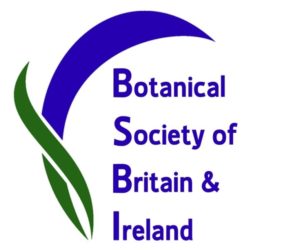Kirkcudbrightshire Botany Group at Kirkbean Glen – 27th August 2022
Six of us turned out and had an excellent day which went beyond all expectations. This glen is a gorge within deciduous woodland, parts of the burn being contained within very steep slopes and rock outcrops. It was notable in July 2008 for the first discovery in the UK of elegant Scaly Male Fern Dryopteris pseudo-disjuncta during a visit by the British Pteridological Society (BPS). It took two years before its identity was confirmed and before research turned up another couple of earlier records in other parts of the UK. So expectations were high for the day.
Exactly 100 species (12 of which were only in the bull-and heifer field we had to cross), including 12 ferns, were recorded in this single monad where we restricted our main search area to the Ancient Semi-Natural Woodland (ASNW) – with some non-native tree planting of many years ago. There were several ASNW indicator species, including Dog’s Mercury Mercurialis perennis, Woodruff Galium odoratum, Enchanter’s Nightshade Circaea lutetiana, Yellow Pimpernel Lysimachia nemorum, Wood Melick Melica uniflora (in abundance mainly on the north slopes of the glen), Wood Millet Milium effusum, and Wood Sanicle Sanicula europaea.
But ferns were our main aim and we soon found Male Fern D. filix-mas; Narrow Buckler Fern D. carthusiana; Broad Buckler Fern D. dilatata; Lady Fern Athyrium filis-femina; Hart’s Tongue Asplenium scolopendrium; Soft Shield Fern Polystichum setiferum; Bracken Pteridium aquilinum on the wood edge; and later a single Black Spleenwort Asplenium adiantum-nigrum at the base of the glen on wet rocks. All relatively easy to identify.
But then came the more difficult Dryopteris affinis aggregate. With varying degrees of certainty, throughout the day, we spent considerable time looking closely at this group, using a variety of text books (varying degrees of help and accuracy here) plus venation photos from Angus Hannah’s article (BSBI News), Fred Rumsey’s seminar in 2016 and the BPS D. pseudo-disjuncta photos of Roger Golding. Scaly Male FernD. affinis was relatively easy to distinguish, but the others of that group proved somewhat more difficult, but we persisted. We managed to find Narrow Male Fern D. cambrensis, and late in the day convinced ourselves that we had finally got Borrer’s Male Fern D. borreri.
I think we may have re-found the Scaly Male Fern D. pseudodisjuncta but at a different grid ref from that stated elsewhere. The original NGR looked to be in the adjoining field if you go by the OS LandRanger map, but the grid finder app shows it on the south bank of the glen. What we found was on the northern bank which for some vague reason was where I thought it was during the BPS meeting. It was a small area with 9 distinct plants that we could see. As it’s such a rare fern, I am sending information and photos (Sarah’s) to the referee for definitive identification.
And finally, we compared two polypody ferns Common Polypody Polypodium vulgare and Intermediate Polypody P. interjectum.
To end a great day in the field, we celebrated with tea in the Kirkbean Community Hall which was opened for its gala day, including a photographic display of past and present features of the area.
Thanks to Sarah for providing all the photos included here – there were several others which just couldn’t be included in the limited space.
David Hawker
BSBI county recorder for Kirkcudbrightshire VC73

